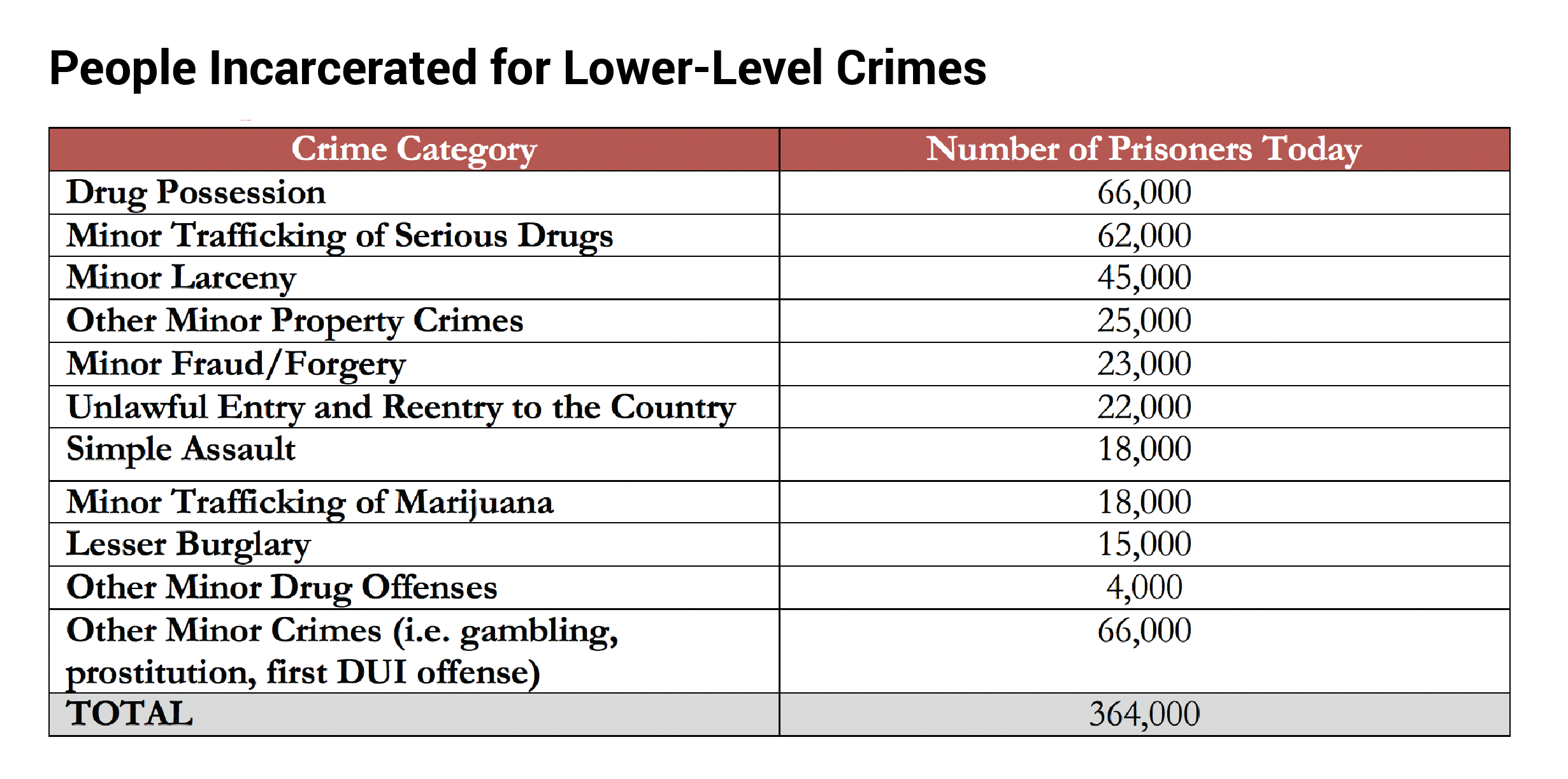More than 70 percent of Americans, including a majority of Trump voters, agree that it’s important to reduce the prison population. But how can that be accomplished? Who belongs in prison and who doesn’t?
There is already consensus on some policy changes, such as reducing penalties for drug use, especially marijuana. But that will only get so far. Drug offenders account for only about 20 percent of the nation’s prisoners. To truly end mass incarceration, we must be more extensive in rethinking punishment.
Below are three oft-discussed proposals that, taken together, could significantly reduce mass incarceration. Of course, other policy changes are important, too, but these three reforms would make a huge impact. For more data on these three, see our Criminal Justice Agenda.
Reform Monetary Bail
Theoretically, the judicial system operates on the principle of “innocent until proven guilty.” Yet 65 percent of people in jail have not been convicted of any crime. They are there waiting for trial. This is called pretrial detention.
But in many jurisdictions, pretrial detention can be avoided if you pay a certain amount of money — or bail. In practice, this means poor people sit in jail, while the rich are treated as innocent until proven otherwise.
Pretrial detention accounts for almost 500,000 people behind bars. Rethinking this system could be a good starting point to reducing mass incarceration. Instead pretrial jail time can be reserved only for those who pose the most danger.
Rethink Who Goes to Prison
Most people (but not everyone) believe that prison is a necessary tool. Separation from society may be the appropriate sanction for those who commit serious and violent crimes. While this notion may seem reasonable for crimes like murder and rape, it is nonsensical for crimes like drug possession.
In 2016, the Brennan Center conducted an in-depth analysis to learn who was in prison and why and to determine who could be released without jeopardizing public safety. The study concluded that 364,000 were behind bars for lower-level crimes and could be released with little danger to the public. That’s more than one-fourth of the total prison population at the time (1.46 million). For this cohort, community service, required attendance at treatment programs, or probation would have a more effective and less costly penalty. Indeed, the largest of this group were people incarcerated for drug possession.

As the chart above demonstrates, the criminal justice system is overly reliant on incarceration for minor crimes.
Shorten Sentences
Generally, imprisonment has three purposes: punishment, deterrence, and rehabilitation. Yet, according to a Brennan Center review of the literature, studies have concluded that these goals can be achieved by meting out sentences far shorter than the ones used today. In fact, as sentences lengthen, their deterrent effect declines. And as far as deterrence is concerned, the incremental difference between a 10-year sentence and a seven-year sentence is not material to decision-making. But those extra three years of prison could cost a state more than $100,000.
Based on its examination of the data, the Brennan Center recommended a 25-percent reduction in sentences for many serious crimes. Such a cut would release 212,000 people. Combining this with the use of alternative penalties such as community service would result in nearly a 40-percent reduction in the prison population, with little to no public safety risk.
Conclusion
These three reforms show how it is possible to end mass incarceration. These approaches would remove more than a half-million people from behind bars, save hundreds of billions of dollars, and pose little to no threat to the public. Even with these reforms, the U.S. would remain well above its democratic peers in incarceration rate. But these relatively modest proposals would cut mass incarceration in half and could end this problem without putting society at risk.
(Photo: Thinkstock)